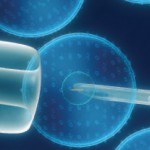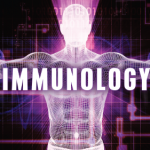“First, find the subtype of the cancer. Then, use the transcriptome as a readout. Look at the situation the tumor is in. Are there altered pathways? Look at the tissues of the organ, or the cell of origin. Are the genes altered? Has some acid in the body gone awry?” he said. His laboratory has developed a tool called PARADIGM to analyze all this data, using it to analyze genomic signatures shared across 12 different tumor types.12
The study suggested molecular data could help cluster patients more effectively, and hopefully point to effective therapy. The researchers also analyzed genomic and transcriptomic data to find key pathways in patients with castration-resistant prostate cancer to help develop more effective therapy protocols.13
Researchers now use techniques such as whole-genome sequencing models to identify genetic variants in patients for more accurate diagnosis. Some patients may have rare, monogenic diseases that aren’t well understood, so researchers such as Shamil R. Sunyaev, PhD, professor and Distinguished Chair of Computational Genomics at Harvard Medical School, look for genetic clues both in their extended family tree and in other, unrelated families. One focus of their study is Mendelian disease, caused by a single, inherited locus.
“There are three types of diseases that we look at: undiagnosed genetic disease, known genetic disease and known diseases where all the known genes have been ruled out,” said Dr. Sunyaev. His research team at Brigham Genomic Medicine Program accepts candidate cases to analyze, and has solved 17 so far.
The researchers also analyzed genomic & transcriptomic data to find key pathways in patients with castration-resistant prostate cancer.
“In many cases, we have only one affected individual patient’s DNA and the parental DNA. If we believe this is a monogenic situation, we ask, ‘Can we resolve this case?’” he said. “We make two assumptions. We assume the penetrance is complete, and we assume we must limit the analysis to protein coding mutations. If penetrance is complete, and the mode of inheritance is dominant, and the parents are unaffected, we assume the mutation is de novo.”
In dominant gene scenarios, one or two parents and the child have the variant, but there may be a cousin affected as well, so “this brings the number of genetic pathways down. Does this variant likely have an effect on gene function?” he said. Next steps include identifying other patients or families who may have the variant using typical disease characteristics or genotyping, developing an animal or cell model, or conducting genotype-informed clinical tests. A significant fraction of patients lacks a coding variant that explains the phenotype in rare diseases, and genetic drift may not explain rare events in large populations, he said.

